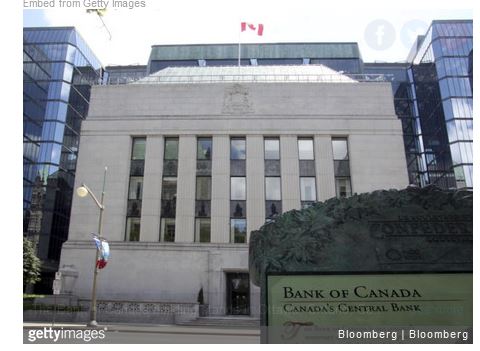A recent internal memo obtained from the Canadian Ministry of Finance under the Access to Information Act revealed that the Ministry may be about to advise the Governor of the Bank of Canada against a further interest rate hike. The economy, claimed one of the minister’s deputies, has ample room to grow before inflation becomes a concern, the subtext, of course, being that a hike would be “politically unpopular.” The only newsworthy item, of course, was the surprise expressed by the reporter that government should consider interfering with monetary policy.
Less in the realm of subterfuge is the news that there are two new candidates under consideration for position of head honcho at the Bank of Canada. The ostensible lack of public interest in the candidates prompted one financial op-ed commentator to liken the toss-up to one between two types of tofu. I’ll add a qualification: However you slice it, and whichever of two slivers of slimy tofu your palate can tolerate, the mere endorsement of a Central Bank must give pause. Think of it: whether it is raising or lowering interest rates, this pecuniary plutocracy is directing the lifeblood of the economy. Has central planning not proven deadly to economies? Why then is this any less true of the reign over the money of Federal Reserve Bank chairman Alan Greenspan or his Canadian counterparts who trail with their own raft of abuses, not least the manipulation of growth rates and unemployment rates.
With its origins in the Bank of England of the 1690s, central, cartelized banking is now commonplace. The blatant printing of money, one object of which is to finance government deficits, however, has since been refined into “fractional reserve banking.” Fractional-reserve banking, explain economists John P. Cochran, Steven T. Call, and Fred R. Glahe, is a credit creation process, which involves the banks in granting credit through issuing “notes and bank balances that are not covered by money.” Economist Murray Rothbard vividly illustrates the process: The Federal Reserve Bank permits the commercial banks to pyramid checkbook money on top of their own reserves by a multiple of approximately 6:1, so that if bank reserves at the Fed increase by $1 billion, the banks can and do pyramid their deposits by $6 billion.
If the Fed wants to expand the money supply, it no longer blatantly prints money, it will simply increase the reserves it gives to banks say by $1 billion, and leave it up to the banks to max their respective lending to the tune of $6 billion of checkbook money. Whether through serving as a reserve for essentially fraudulent banks, or purchasing assets, usually government securities, on the free market, the Fed is involved in increasing the money supply. As economists Hans H. Hoppe, Jorg G. Hulsmann and Walter Block point out, this money substitute, created out of thin air, represents no more than an additional supply of property titles, while the supply of property remains constant. The ‘money’ very plainly does not exist, making the issuance of such paper notes–called fiduciary media–tantamount to fraud.
Amidst pronouncements of plenty, crucial to understand is that, unlike other goods, the excess of which benefit consumers, excess money originating in this government-directed counterfeit creates inflation and diminishes purchasing power. Having cautioned that “paper money cannot replace production,” Economist Frank Shostak confirmed that the yearly rate of Fed-directed growth of the money base has been climbing consistently since 1996, this “large increase in the money supply” being the essence of inflation.
In an unhampered market, the natural rate of interest would properly reflect the net choices of all lenders and borrowers to consume or postpone consumption. The expansion of credit by the Central and commercial banks distorts this rate, causing interest rates to fall below the natural rate, hence an artificial stimulation of economic activity. To reduce fake growth, the Fed must raise interest rates and tightens credit. But by this time, misdirected investment has already occurred.
Incidentally, the policies of the two Canadian candidates are fissured along the same lines that distinguish Alan Greenspan from his opponents. Greenspan, more of an “inflation dove”, believes that 4 percent unemployment is compatible with stable inflation. ‘Hard-line’ Fed governor Laurence Meyer insists growth must further be slowed to combat inflation at the risk of a rise in unemployment.
My bet hedges on the anti-interest-hike, inflation-tolerant advocate. As the late indefatigable scholar of central banking, Murray Rothbard, observed, the first to get the new money are the counterfeiters themselves. By the time it has percolated down to the economically marginal, monetary inflation has reduced its value. Some coincidence it is then that those who perch atop the cartel’s pecking order, like Alan Greespan and the Canadian fecund fellows, are also “inflation doves”.
©2000 By Ilana Mercer
The Calgary Herald
August 31
*Image courtesy Getty
CATEGORIES: Canada, Economy, Federal Reserve Bank, Inflation, Political Economy, Politics & Policy

 print
print